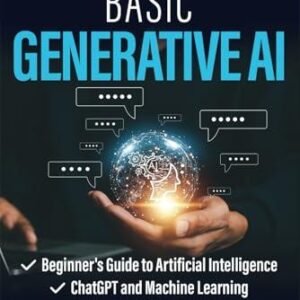In today’s fast-paced digital world, the landscape of educational administration is undergoing a remarkable transformation, propelled by the advent of artificial intelligence (AI). As schools and universities strive to enhance operational efficiency and improve student outcomes, the integration of AI technologies is becoming increasingly crucial. From streamlining administrative tasks to providing data-driven insights that inform decision-making, AI holds the potential to revolutionize the way educational institutions operate. This article explores how AI efficiency is reshaping educational administration, and how it can help leaders navigate the complexities of today’s educational environment. Join us as we delve into the innovative strategies and tools that are empowering educators, enhancing productivity, and ultimately fostering a more effective learning experience for students. Welcome to the future of educational administration, where technology and human insight combine to create a more dynamic and responsive educational framework.
Table of Contents
- Exploring the Role of AI in Streamlining Administrative Tasks
- Enhancing Decision-Making Through Data-Driven Insights
- Implementing AI Solutions for Personalized Learning Environments
- Fostering Collaboration and Communication Among Educational Stakeholders
- Future Outlook
Exploring the Role of AI in Streamlining Administrative Tasks
The integration of artificial intelligence into educational administration marks a significant evolution in enhancing productivity and improving decision-making processes. By automating the most repetitive tasks, institutions can focus their resources on providing quality education. Some key areas where AI brings efficiency include:
- Data Management: AI systems can sort, analyze, and manage vast amounts of student data, ensuring that educational institutions make informed decisions based on accurate information.
- Streamlined Communication: Chatbots and AI-driven platforms facilitate real-time communication, reducing delays in administrative tasks like answering student inquiries and processing requests.
- Personalized Experiences: AI can tailor administrative services to meet individual student needs, enhancing service delivery and overall student satisfaction.
Moreover, the implementation of AI technologies can lead to a marked reduction in operational costs. For instance, schools can reduce the workload on staff, allowing them to concentrate on more strategic tasks rather than getting bogged down by mundane administrative duties. The following table illustrates potential cost savings through AI integration:
| Task | Average Time Saved per Week | Annual Cost Savings |
|---|---|---|
| Data Entry | 5 hours | $2,500 |
| Fee Processing | 3 hours | $1,500 |
| Scheduling | 2 hours | $1,000 |
Enhancing Decision-Making Through Data-Driven Insights
In the realm of educational administration, harnessing data to inform decisions is revolutionizing how institutions operate. By adopting advanced analytics, administrators can uncover actionable insights that lead to informed policy-making and strategic planning. For example, predictive analytics can help institutions allocate resources more effectively, anticipate student needs, and enhance learning outcomes. By utilizing comprehensive data sets, schools can identify key trends, improving retention rates and overall academic performance.
Furthermore, the integration of AI-driven tools facilitates a deeper understanding of student demographics and engagement metrics. This allows for the development of tailored programs that address specific community needs. Elements such as attendance records, test scores, and engagement trends can guide educational leaders in implementing interventions that are not only timely but also effective. Below is a simple table illustrating how various data points can contribute to decision-making:
| Data Point | Insight | Action |
|---|---|---|
| Attendance Rates | Identifies trends in student engagement | Interventions for at-risk students |
| Standardized Test Scores | Measures academic performance | Curriculum adjustments |
| Course Comparisons | Highlights effective teaching strategies | Share best practices among faculty |
Implementing AI Solutions for Personalized Learning Environments
The integration of artificial intelligence in educational administration is paving the way for highly adaptable learning environments tailored to meet individual student needs. By leveraging AI algorithms, educational platforms can analyze a multitude of data points—such as learning styles, progress rates, and engagement levels—to create customized learning pathways. This approach not only enhances student experience but also enables educators to focus on what truly matters: fostering creativity and critical thinking.
Here are some key benefits of implementing AI-driven personalized learning solutions:
- Adaptive Learning Paths: AI can adjust course materials in real-time based on a student’s performance.
- Increased Engagement: Tailored content keeps students motivated and actively participating in their learning journey.
- Data-Driven Insights: Educators receive actionable insights to identify at-risk students and intervene effectively.
- Scalability: AI systems can support an increasing number of students without compromising quality.
| Feature | AI Implementation | Expected Outcome |
|---|---|---|
| Personalized Content Delivery | AI solutions analyze student data to modify learning materials. | Enhanced learning retention and satisfaction. |
| Real-Time Feedback | AI systems provide instant assessments and suggestions. | Improved student accountability and progress. |
| Resource Optimization | AI identifies the most effective teaching strategies and resources. | More efficient use of time and institutional resources. |
Fostering Collaboration and Communication Among Educational Stakeholders
In today’s interconnected educational landscape, fostering an environment of collaboration and communication among all stakeholders is paramount for successful outcomes. Integrating artificial intelligence into educational administration can act as a catalyst for these efforts. By leveraging AI-driven platforms, educational leaders can create seamless lines of communication between teachers, parents, and students, ensuring that everyone is engaged and informed. This can include:
- Real-time updates: AI can facilitate the timely sharing of important information, such as grades and announcements.
- Interactive feedback: Stakeholders can provide input through user-friendly interfaces, promoting a sense of community.
- Data-driven insights: AI can analyze communication patterns, helping educators understand the most effective ways to reach various groups.
Moreover, by incorporating AI tools, educational institutions can streamline decision-making processes. For instance, using AI-enabled dashboards allows administrators to visualize data on stakeholder engagement and identify areas for improvement. By providing tools that enhance collaboration, stakeholders can work together more effectively. Here’s a simple representation of how AI can strengthen collaboration:
| Stakeholder | AI Tool | Benefit |
|---|---|---|
| Teachers | AI Chatbots | Instant support for queries |
| Parents | Parent Portals | Easy access to student progress |
| Students | Learning Analytics | Tailored learning experiences |
Future Outlook
the integration of artificial intelligence into educational administration offers a transformative opportunity for institutions seeking efficiency and effectiveness in their operations. By leveraging AI tools, administrators can streamline processes, enhance decision-making, and ultimately create a more responsive and adaptive educational environment. As we continue to embrace technological advancements, it is essential for educational leaders to remain proactive in exploring innovative solutions that not only support their goals but also enrich the learning experiences of students and educators alike.
As we look to the future, let’s continue the conversation about the potential of AI in education. How do you envision the role of technology evolving in your institution? Share your thoughts and experiences in the comments below, and let’s pave the way for a more efficient and impactful educational landscape together.





